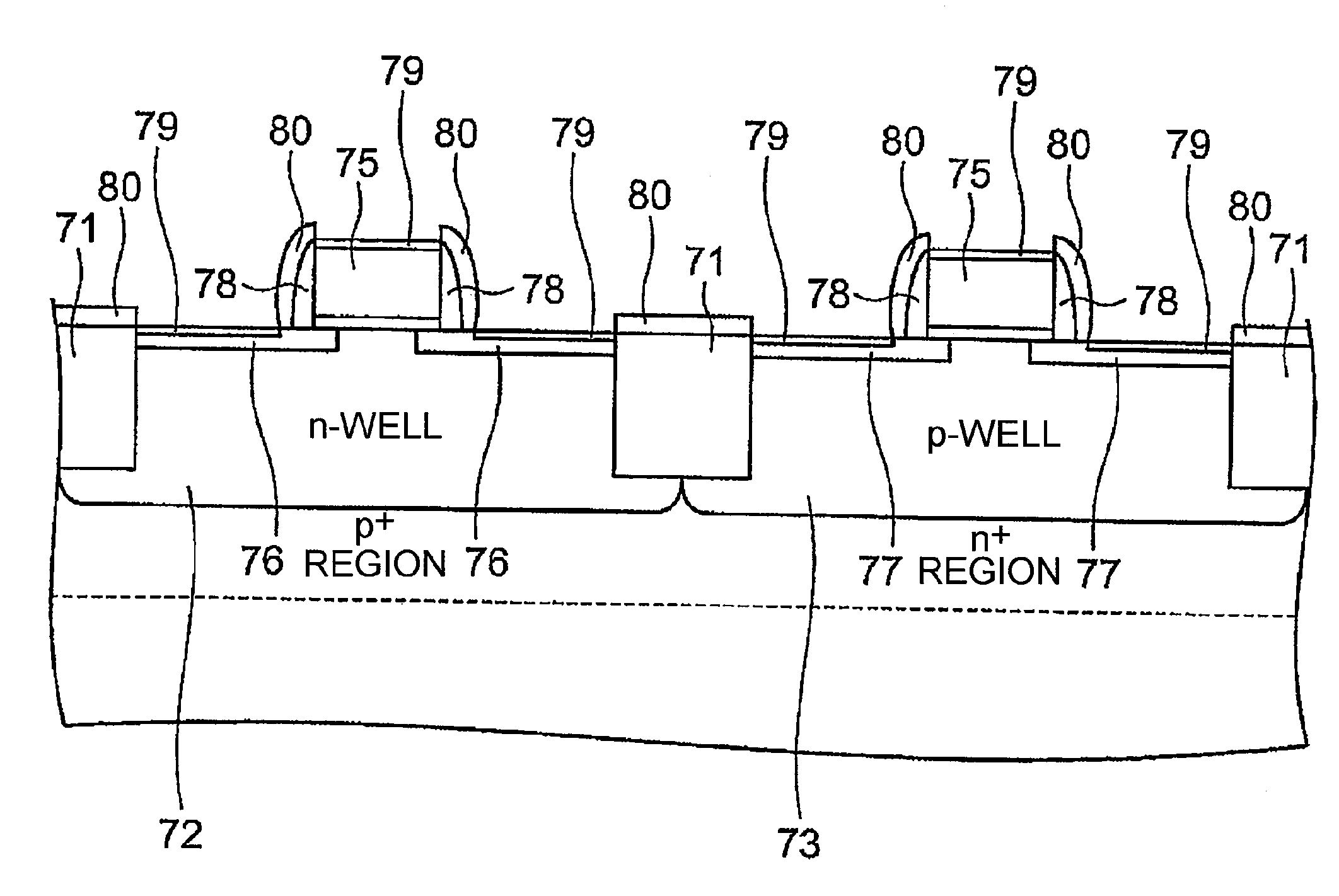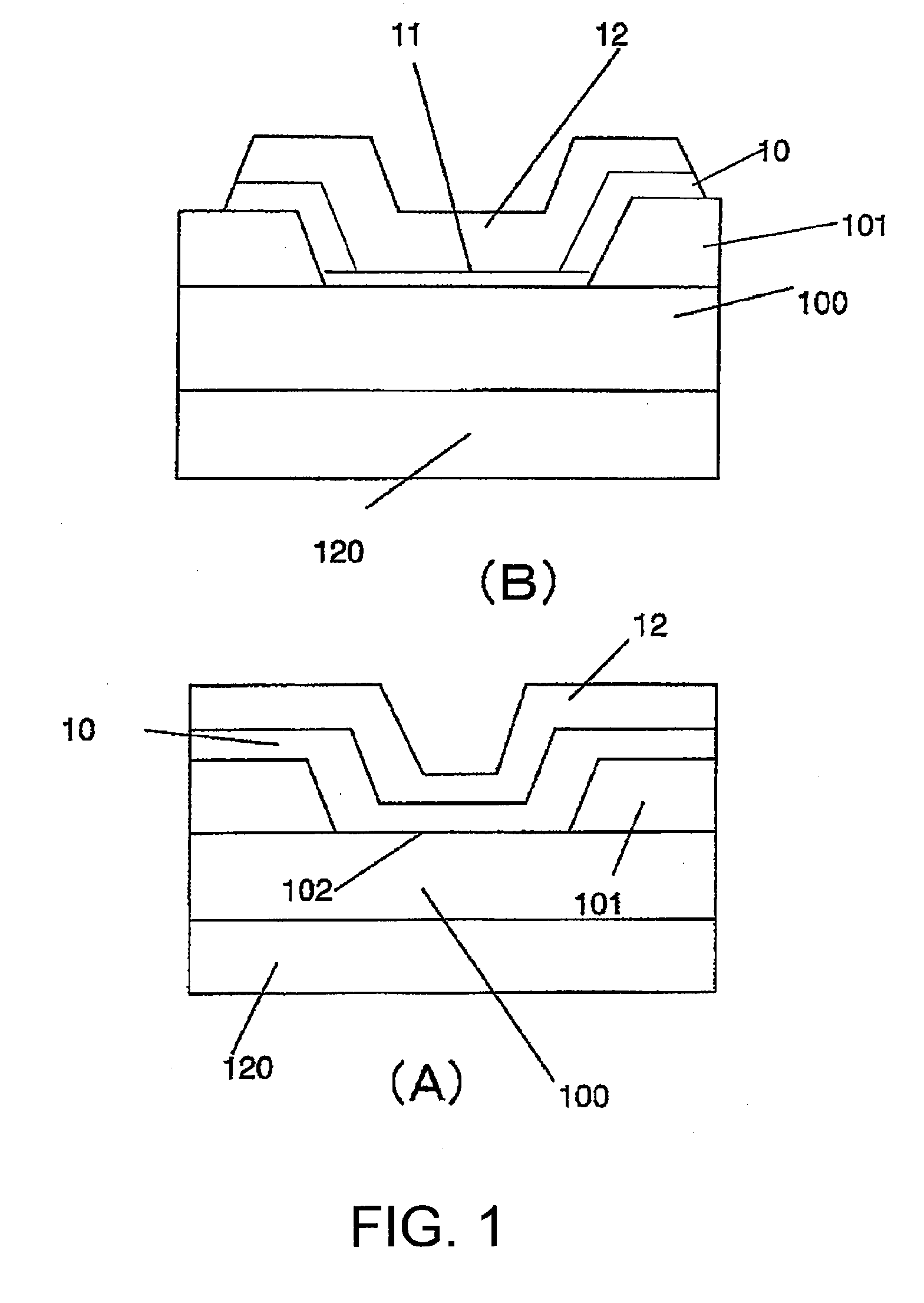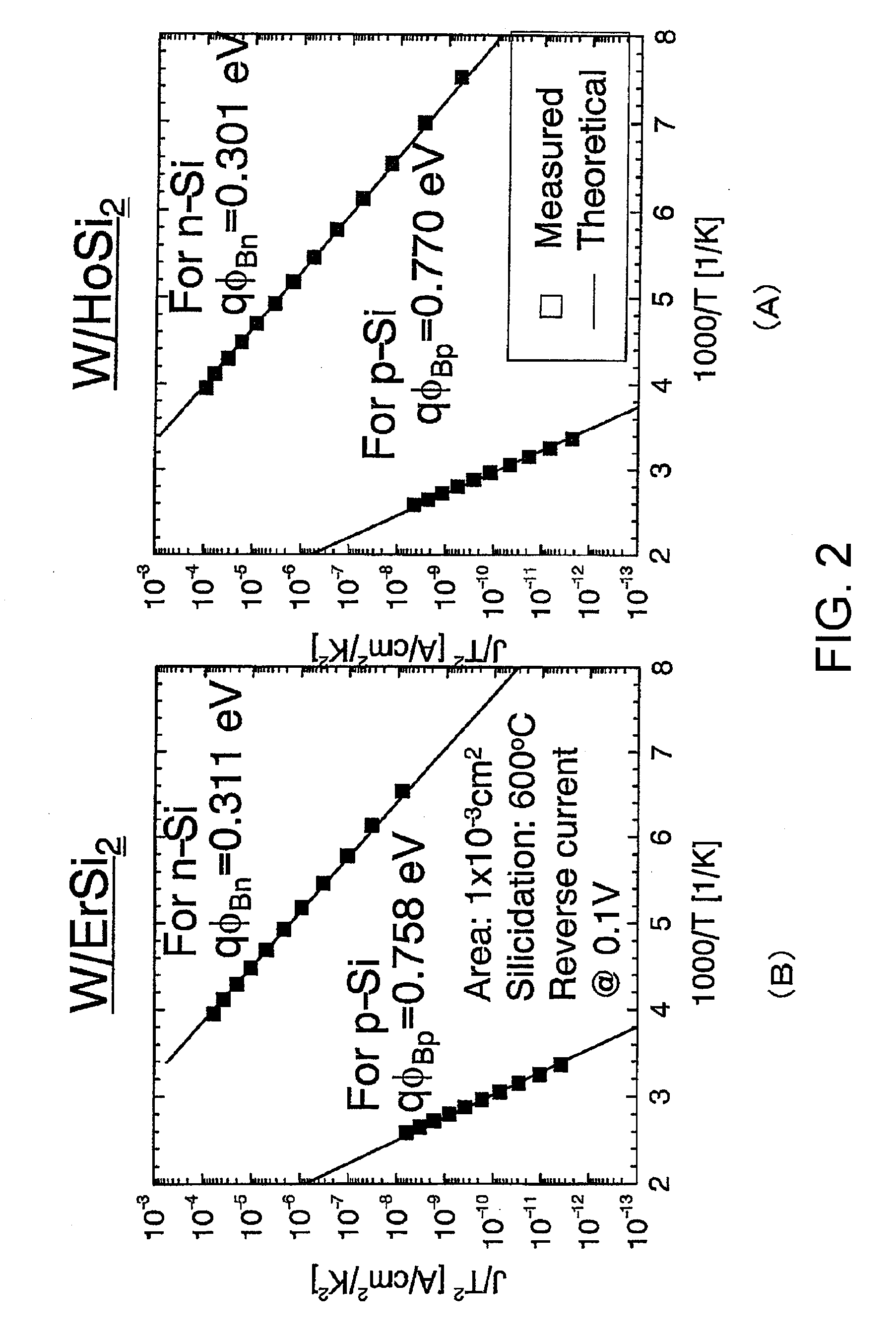Contact Formation Method, Semiconductor Device Manufacturing Method, and Semiconductor Device
a technology of contact formation and manufacturing method, which is applied in the direction of semiconductor devices, basic electric elements, electrical apparatus, etc., can solve the problems of preventing oxygen, impedes performance improvement, and does not sufficiently clarify, so as to prevent oxygen and reduce the resistance of contact silicide or gate metal. , the effect of low contact resistan
- Summary
- Abstract
- Description
- Claims
- Application Information
AI Technical Summary
Benefits of technology
Problems solved by technology
Method used
Image
Examples
first embodiment
[0057]As shown in FIG. 7 (A), the n-channel field-effect transistor according to the present invention is formed in a device region of a silicon substrate 20 which is isolated by a device isolation region 22. As the silicon substrate 20, for example, a p-type silicon substrate is used. In the example illustrated in the figure, a p+ well region 24 is formed in the device region. Within the p+ well region 24, a gate insulating film 26 formed of a silicon oxide film or the like and a gate electrode 28 formed of polysilicon or the like are provided. Although not shown in the figure, a shallow implant region is formed in a region to be a source / drain.
[0058]Thereafter, in order to ensure insulation with respect to the gate electrode 26, a side wall 30 comprising a silicon oxide film or a silicon nitride film is formed on the gate insulating film26 and the gate electrode 28. Subsequently, over the entire surface, an interlayer insulating film 31 of BPSG (Boro-Phospho Silicate Glass) is for...
second embodiment
[0072]Referring to FIG. 8, a semiconductor device according to the present invention will be described. The semiconductor device illustrated in FIG. 8 is a so-called bulk-current controlled type accumulation mode n-channel transistor.
[0073]In the bulk-current controlled type accumulation mode n-channel transistor illustrated in the figure, on a supporting substrate 50 formed of p-type silicon, an n-type semiconductor layer 54 is formed and isolated by a buried oxide film 52 having a thickness of about 100 nm. Herein, the semiconductor layer 54 forms a channel region. A surface of the channel region illustrated in the figure has a (100) orientation. The semiconductor layer 54 has a film thickness of 50 nm. On both sides of the channel region formed of the n-type semiconductor layer 54, source / drain regions 56 are formed each of which has a conductivity type identical with that of the channel region and each of which is formed of an n+ semiconductor having an impurity atomic concentra...
third embodiment
[0081]Referring to FIG. 9, a semiconductor device according to the present invention will be described. The semiconductor device illustrated in the figure is a CMOS using device isolation by shallow trench isolation (STI), two-layer wiring, and chemical mechanical polishing (CMP).
[0082]A manufacturing process for obtaining the structure shown in FIG. 9 will be described using FIGS. 10 and 11. First, referring to FIG. 10, a device isolation region 71 of a STI structure is formed. After an n-well 72 and a p-well 73 are formed, activation is performed. Subsequently, as a gate insulating film 74, a silicon oxide film is formed to a thickness of 2 nm. On the gate insulating film 74, a gate electrode 75 is formed by using polysilicon.
[0083]Next, for the purpose of forming p+ regions 76 and n+ regions 77 in the n-well 72 and the p-well 73, boron and phosphorus are ion-implanted into the n-well 72 and the p-well 73 by 6×1015 cm2, respectively. As a consequence, the high-concentration region...
PUM
| Property | Measurement | Unit |
|---|---|---|
| work function | aaaaa | aaaaa |
| area | aaaaa | aaaaa |
| work function | aaaaa | aaaaa |
Abstract
Description
Claims
Application Information
 Login to View More
Login to View More - R&D
- Intellectual Property
- Life Sciences
- Materials
- Tech Scout
- Unparalleled Data Quality
- Higher Quality Content
- 60% Fewer Hallucinations
Browse by: Latest US Patents, China's latest patents, Technical Efficacy Thesaurus, Application Domain, Technology Topic, Popular Technical Reports.
© 2025 PatSnap. All rights reserved.Legal|Privacy policy|Modern Slavery Act Transparency Statement|Sitemap|About US| Contact US: help@patsnap.com



